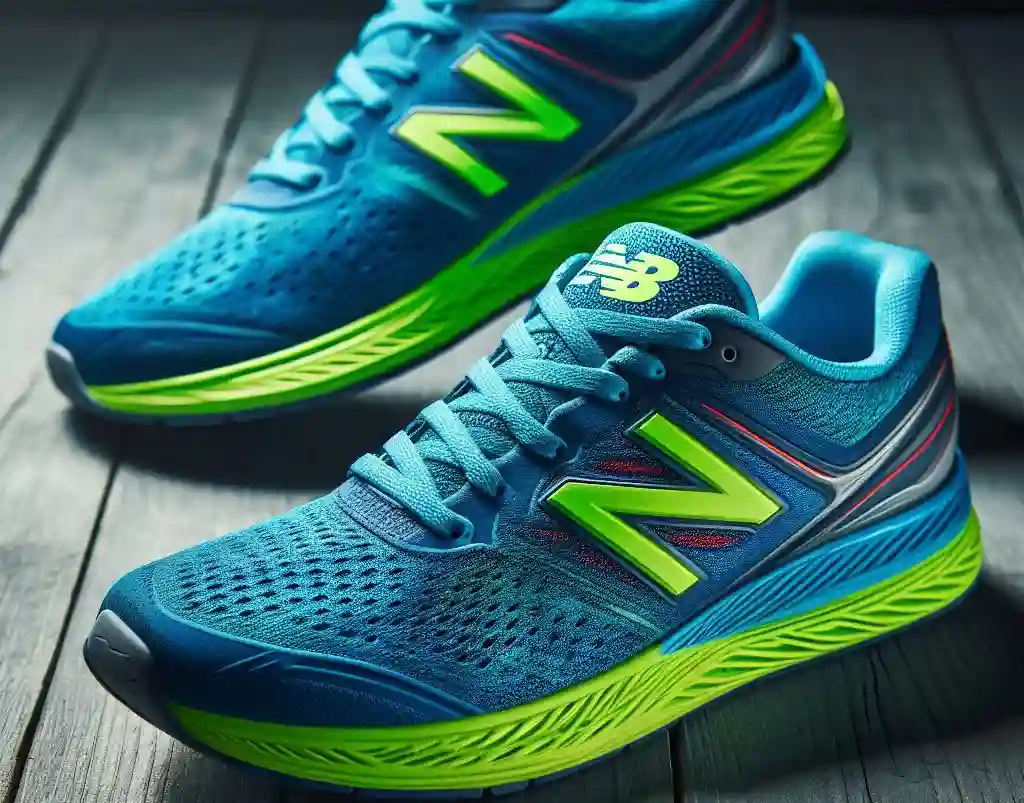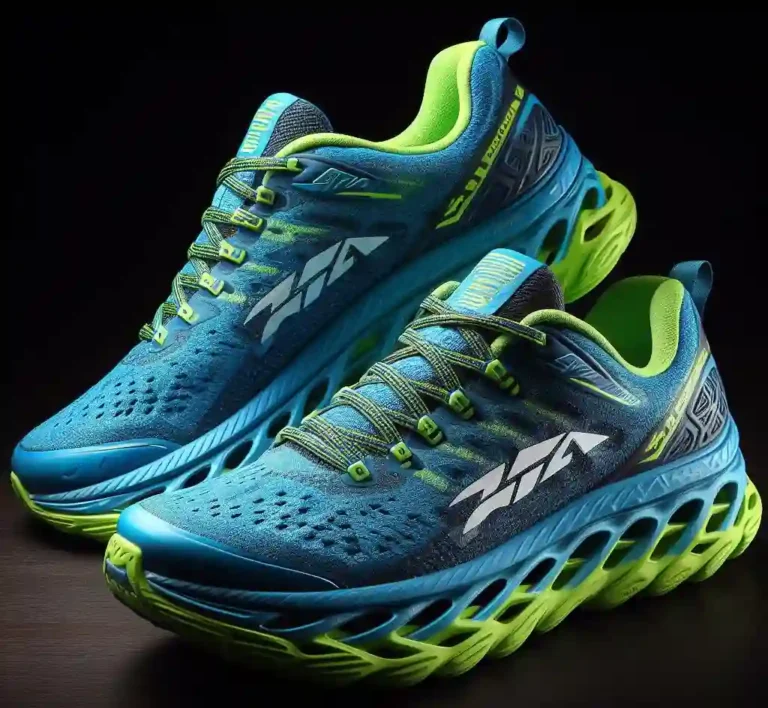Saucony vs New Balance: Which One Should You Choose?
Saucony vs New Balance: When it comes to choosing the perfect running shoes, two brands often top the list: Saucony and New Balance.
Both have earned a reputation for delivering high-quality, performance-driven footwear that can make all the difference in a runner’s performance and overall comfort.
But, with so many similarities between the two, it can be tough to decide which one is right for you.
Saucony vs New Balance: A Quick Overview

Similarities:
- Both Saucony and New Balance are well-established running shoe brands with a long history of producing high-quality shoes.
- Both brands offer a wide range of shoe models catering to different running styles, preferences, and foot types.
- Both brands are known for their commitment to innovation, technology, and performance.
Differences:
Saucony:
- Known for their more substantial and supportive shoes, often preferred by runners with high arches or plantar fasciitis.
- Feature a more substantial heel-to-toe offset (around 8-10mm) for a more cushioned ride.
- Often preferred by runners who need more support and stability.
- Popular models include the Freedom ISO, Guide, and Triumph.
New Balance:
- Known for their more minimalist and lightweight shoes, often preferred by runners with neutral foot pronation.
- Feature a lower heel-to-toe offset (around 4-6mm) for a more natural stride.
- Often preferred by runners who need less support and more flexibility.
- Popular models include the Fresh Foam, 574, and 860.
Ultimate Decision:
- If you’re a runner who needs more support and stability, Saucony might be the better choice.
- If you’re a runner who prefers a more minimalist and lightweight ride, New Balance might be the better choice.
Cushioning and Comfort: Which Brand Offers Better Comfort?

Cushioning
- Saucony:
- Known for their generous cushioning, especially in the midsole and forefoot.
- Feature a more substantial heel-to-toe offset (around 8-10mm) for a more cushioned ride.
- Use a variety of cushioning technologies, including PWRTRAC, EVERUN, and PWRRUN.
- Provide a softer and more comfortable ride, especially for runners who need more support.
- New Balance:
- Offer a more balanced cushioning, with a focus on responsiveness and flexibility.
- Feature a lower heel-to-toe offset (around 4-6mm) for a more natural stride.
- Use technologies like Fresh Foam, Revlite, and ABZORB for a smooth and comfortable ride.
- Provide a more subtle and responsive cushioning, suitable for runners who prefer a more natural feel.
Comfort
- Saucony:
- Known for their comfortable and breathable upper materials, such as ISOFIT and FORMFIT.
- Feature a more substantial and supportive heel counter for a secure fit.
- Offer a more relaxed and comfortable fit, especially for runners with wider feet.
- New Balance:
- Offer a more snug and secure fit, especially in the heel and midfoot.
- Feature a more minimalist and lightweight upper design, with a focus on flexibility and breathability.
- Provide a more adaptive and comfortable fit, suitable for runners with narrower feet.
Ultimate Decision
- If you prioritize a softer and more cushioned ride, Saucony might be the better choice.
- If you prefer a more balanced and responsive cushioning, New Balance might be the better choice.
- Consider your personal running style, foot type, and preferences when choosing between Saucony and New Balance.
Support and Stability: Which Shoe Reigns Supreme?

Support
- Saucony:
- Known for their supportive shoes, especially for runners with high arches or plantar fasciitis.
- Feature a more substantial and supportive heel counter for a secure fit.
- Offer a range of support features, including medial posts, stability bridges, and supportive upper materials.
- Provide a more substantial and supportive ride, especially for runners who need more support.
- New Balance:
- Offer a more balanced support, with a focus on flexibility and adaptability.
- Feature a more minimalist and lightweight upper design, with a focus on breathability and flexibility.
- Provide a more subtle and adaptive support, suitable for runners with neutral foot pronation.
Stability
- Saucony:
- Known for their stability features, such as medial posts and stability bridges.
- Feature a more substantial and supportive midfoot and heel design for added stability.
- Offer a range of stability features, including Guide Rails and PWRTRAC, to help correct overpronation.
- Provide a more stable and supportive ride, especially for runners who need more stability.
- New Balance:
- Offer a more subtle and adaptive stability, with a focus on flexibility and responsiveness.
- Feature a more minimalist and lightweight midfoot and heel design for a more natural stride.
- Provide a more subtle and adaptive stability, suitable for runners with neutral foot pronation.
Ultimate Decision
- If you need more support and stability, Saucony might be the better choice.
- If you prefer a more balanced and adaptive support, New Balance might be the better choice.
- Consider your personal running style, foot type, and preferences when choosing between Saucony and New Balance.
Traction and Grip: Which Shoe Stack Up for Hiking?

Traction
- Saucony:
- Feature a more aggressive tread pattern for improved traction on various surfaces.
- Use a combination of lugs and grooves to provide grip on both dry and wet surfaces.
- Offer a more substantial and durable outsole for improved traction and durability.
- Provide a more confident and secure ride, especially on uneven or slippery surfaces.
- New Balance:
- Feature a more subtle and adaptive tread pattern for improved grip on various surfaces.
- Use a combination of lugs and flex grooves to provide flexibility and traction.
- Offer a more lightweight and flexible outsole for improved responsiveness and grip.
- Provide a more agile and adaptable ride, especially on smooth or dry surfaces.
Grip
- Saucony:
- Feature a more substantial and aggressive grip pattern for improved traction on various surfaces.
- Use a combination of rubber compounds and tread patterns to provide grip on both dry and wet surfaces.
- Offer a more confident and secure grip, especially on uneven or slippery surfaces.
- New Balance:
- Feature a more subtle and adaptive grip pattern for improved grip on various surfaces.
- Use a combination of rubber compounds and tread patterns to provide flexibility and grip.
- Offer a more agile and adaptable grip, especially on smooth or dry surfaces.
Ultimate Decision
- If you prioritize traction and grip on uneven or slippery surfaces, Saucony might be the better choice.
- If you prefer a more agile and adaptable grip on smooth or dry surfaces, New Balance might be the better choice.
- Consider your personal running style, foot type, and preferences when choosing between Saucony and New Balance.
Weight and Responsiveness: The Verdict Both The Shoes

Weight
- Saucony:
- Generally heavier than New Balance shoes, with an average weight of 10-12 oz (280-340g) for men’s models.
- Feature a more substantial and supportive design, which can add to the overall weight.
- However, some Saucony models, like the Freedom ISO, are designed to be lighter and more flexible.
- New Balance:
- Generally lighter than Saucony shoes, with an average weight of 8-10 oz (220-280g) for men’s models.
- Feature a more minimalist and lightweight design, which helps to reduce weight.
- Some New Balance models, like the Fresh Foam, are designed to be even lighter and more responsive.
Responsiveness
- Saucony:
- Feature a more substantial and supportive midsole, which can affect responsiveness.
- However, some Saucony models, like the Freedom ISO, are designed to be more flexible and responsive.
- Use technologies like PWRTRAC and EVERUN to provide a more responsive ride.
- New Balance:
- Feature a more minimalist and lightweight midsole, which helps to improve responsiveness.
- Use technologies like Fresh Foam and Revlite to provide a more responsive and springy ride.
- Designed to provide a more agile and adaptable ride, especially for runners who prefer a more natural stride.
Ultimate Decision
- If you prioritize a lighter and more responsive ride, New Balance might be the better choice.
- If you prefer a more substantial and supportive ride, Saucony might be the better choice.
- Consider your personal running style, foot type, and preferences when choosing between Saucony and New Balance.
Breathability and Ventilation: Keeping Your Feet Cool and Dry
Breathability
- Saucony:
- Feature a more substantial and supportive upper material, which can affect breathability.
- However, many Saucony models, like the Freedom ISO, feature breathable mesh panels for improved airflow.
- Use technologies like ISOFIT and FORMFIT to provide a more comfortable and breathable fit.
- New Balance:
- Feature a more minimalist and lightweight upper material, which helps to improve breathability.
- Use mesh panels and perforations to provide excellent airflow and ventilation.
- Designed to provide a more comfortable and breathable ride, especially for runners who prioritize ventilation.
Ventilation
- Saucony:
- Feature ventilation systems, like the FlexFilm upper, to provide airflow and breathability.
- Use perforations and mesh panels to provide ventilation and cooling.
- Designed to provide a more comfortable and breathable ride, especially for runners who prioritize ventilation.
- New Balance:
- Feature a more extensive ventilation system, with larger mesh panels and perforations.
- Use technologies like Fresh Foam and Revlite to provide a more breathable and responsive ride.
- Designed to provide excellent ventilation and cooling, especially for runners who prioritize breathability.
Ultimate Decision
- If you prioritize breathability and ventilation, New Balance might be the better choice.
- If you prefer a more substantial and supportive ride, Saucony might be the better choice.
- Consider your personal running style, foot type, and preferences when choosing between Saucony and New Balance.
Durability and Longevity: Which Shoe Will Last Longer?
Durability
- Saucony:
- Known for their durable and long-lasting shoes, with a focus on high-quality materials and construction.
- Feature a more substantial and supportive design, which can add to the overall durability.
- Use technologies like PWRTRAC and EVERUN to provide a more durable and responsive ride.
- New Balance:
- Also known for their durable and long-lasting shoes, with a focus on high-quality materials and construction.
- Feature a more minimalist and lightweight design, which can affect durability.
- Use technologies like Fresh Foam and Revlite to provide a more durable and responsive ride.
Longevity
- Saucony:
- Generally, Saucony shoes are known to last longer, with an average lifespan of 300-400 miles.
- Feature a more substantial and supportive design, which can add to the overall longevity.
- Use high-quality materials and construction to ensure a longer lifespan.
- New Balance:
- Generally, New Balance shoes are known to last around 200-300 miles.
- Feature a more minimalist and lightweight design, which can affect longevity.
- Use high-quality materials and construction to ensure a longer lifespan, but may not last as long as Saucony shoes.
Ultimate Decision
- If you prioritize durability and longevity, Saucony might be the better choice.
- If you prefer a more minimalist and lightweight design, New Balance might be the better choice.
- Consider your personal running style, foot type, and preferences when choosing between Saucony and New Balance.
Style and Aesthetics: Which Shoe Looks and Feels Better?
Style
- Saucony:
- Known for their bold and vibrant color schemes, with a focus on bright and eye-catching designs.
- Feature a more substantial and supportive design, which can affect the overall style.
- Offer a wide range of styles, from sleek and modern to bold and statement-making.
- New Balance:
- Known for their more understated and classic color schemes, with a focus on neutral and earthy tones.
- Feature a more minimalist and lightweight design, which can affect the overall style.
- Offer a wide range of styles, from classic and traditional to modern and trendy.
Aesthetics
- Saucony:
- Feature a more aggressive and angular design, with a focus on bold lines and shapes.
- Use high-quality materials and construction to ensure a premium look and feel.
- Offer a wide range of color options and styles to suit different tastes and preferences.
- New Balance:
- Feature a more streamlined and sleek design, with a focus on clean lines and minimalism.
- Use high-quality materials and construction to ensure a premium look and feel.
- Offer a wide range of color options and styles to suit different tastes and preferences.
Ultimate Decision
- If you prioritize bold and vibrant styles, Saucony might be the better choice.
- If you prefer more understated and classic styles, New Balance might be the better choice.
- Consider your personal style, preferences, and running goals when choosing between Saucony and New Balance.
The Final Step: Which Shoe Reigns Supreme in Our Head-to-Head Comparison?
Saucony
- Strengths:
- More substantial and supportive design
- Better suited for runners with high arches or plantar fasciitis
- More aggressive and angular design
- Better for runners who need more support and stability
- Weaknesses:
- Heavier and less breathable than New Balance
- Less flexible and adaptable than New Balance
- May not be suitable for runners with neutral foot pronation
New Balance
- Strengths:
- Lighter and more breathable than Saucony
- More flexible and adaptable than Saucony
- Better suited for runners with neutral foot pronation
- More minimalist and lightweight design
- Weaknesses:
- Less supportive and stable than Saucony
- May not be suitable for runners with high arches or plantar fasciitis
- Less aggressive and angular design
Ultimate Decision
- If you prioritize support and stability, Saucony might be the better choice.
- If you prioritize flexibility and adaptability, New Balance might be the better choice.
- Consider your personal running style, foot type, and preferences when choosing between Saucony and New Balance.
FAQs
Q: Which brand is better for runners with high arches?
A: Saucony is generally better for runners with high arches or plantar fasciitis due to their more substantial and supportive design.
Q: Which brand is better for runners with neutral foot pronation?
A: New Balance is generally better for runners with neutral foot pronation due to their more flexible and adaptable design.
Q: Which brand is better for runners who need more support and stability?
A: Saucony is generally better for runners who need more support and stability due to their more substantial and supportive design.
Q: Which brand is better for runners who prioritize flexibility and adaptability?
A: New Balance is generally better for runners who prioritize flexibility and adaptability due to their more minimalist and lightweight design.
Q: Which brand is better for runners who prioritize style and aesthetics?
A: Both brands offer a wide range of styles and aesthetics, so it ultimately depends on personal preference.
Q: Which brand is better for runners who prioritize durability and longevity?
A: Saucony is generally better for runners who prioritize durability and longevity due to their more substantial and supportive design.
Q: Which brand is better for runners who prioritize breathability and ventilation?
A: New Balance is generally better for runners who prioritize breathability and ventilation due to their more minimalist and lightweight design.

Mia Smith is the founder of Shoe Storyteller, a blog that celebrates the art and stories behind shoes. With a passion for fashion and a flair for storytelling, Mia brings a unique perspective to the world of footwear.



